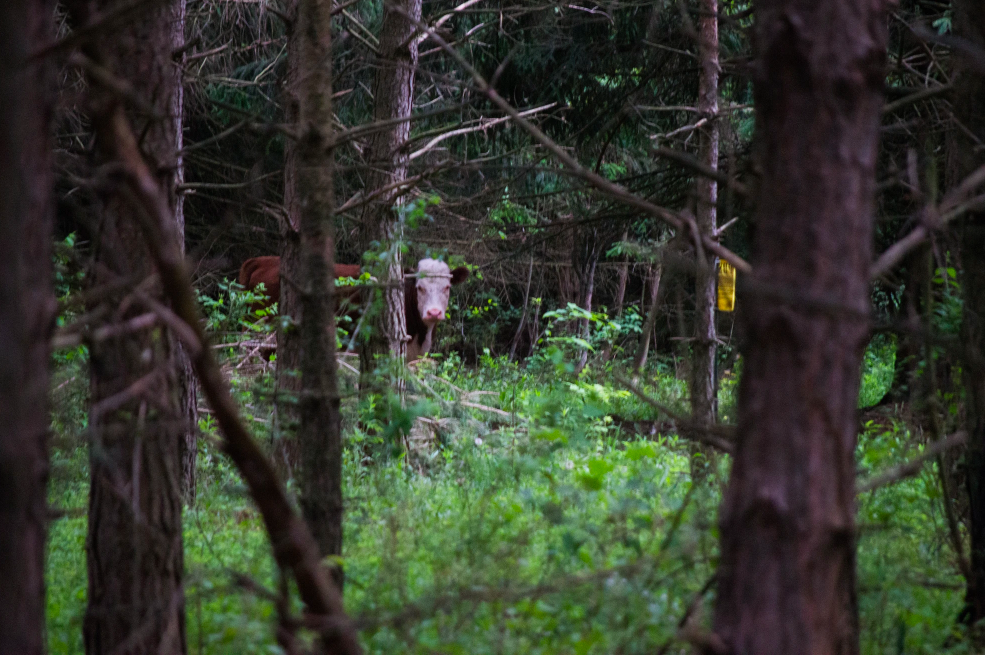Why Study Animal Resistance
The study of animal resistance can have a strong pedagogical impact, inspiring people to think more deeply about the lives and plight of other animals.
When I was eight years old, I had two guinea pigs, Thunder and Lightning. During the summer, they spent time in an outdoor enclosure on the lawn, which I moved around so they could nibble on fresh grass. One day, when I went to check on them, the pair were nowhere to be found. They had dug under the enclosure’s wall and escaped. I searched the area, but they had vanished deep into the thicket.
At the time, we lived on several acres of forested land bordered by a mountain. Months after the escape, during the following spring, I was strolling along a trail about a kilometre from the house when, to my great surprise, I spotted Thunder and Lightning among some salal bushes. They were a considerable distance, through mossy fields and tall trees, from where they had escaped. Together, they had survived by eating grass and other wild plants. As soon as they saw me, they darted back into the dense bush. My eight-year-old self tried once again to capture them, but my attempts were futile.
Witnessing the agency of Thunder and Lighting taught me two things: first, they desired to exist beyond the confines assigned to them, and they made this desire for freedom a reality. Second, they had managed to survive for some time without human intervention, having essentially rewilded themselves and travelled through the woods.
Of course, it’s not recommended to leave domesticated animals in the woods (although there are exceptions).
It wasn't until my first semester of college that I learned about the philosophy of animal rights and, soon after, became a vegan and animal advocate. I later moved to Ontario, where I began studying animal resistance within the field of Critical Animal Studies.
One aspect that drew me to this study was the profound pedagogical impact, regardless of the observer’s age, that animal resistance can have on witnesses. When animals rebel, their agency and plight in human-dominated society is illuminated.
Once we start paying attention, stories of animal resistance are ubiquitous. Monkeys break out of laboratory cages, pigs refuse to descend the slaughterhouse ramp, cows confront those who abduct their calves, gorillas dismantle hunters' traps and alert other species to dangers, horses resist running on racing circuits, elephants defend against abusers in circuses, whales sink ships to protect their kin . . . These acts of defiance are clear statements against their oppression, requiring that we listen to and recognize other animals as fellow beings in the fight for justice.
Animals’ resistance has long been depicted in various mediums, both fiction and nonfiction. Examples include the rebellious horses in Géricault's Race of the Riderless Horses in Rome, activist literature like The Plague Dogs, numerous fictional accounts of collective bird attacks, political allegories such as Animal Farm, and non-fiction works like The Tiger: A True Story of Vengeance and Survival.
There are even signs of animal resistance in ancient relics, such as a Sicilian mosaic depicting animals being loaded unwillingly onto a boat. Many individuals such as those shown in this mosaic were taken from their homes and transported overseas to the ancient Roman Colosseum, where they would be killed in horrific hunting games. In one documented case, a group of elephants, realizing there was no way to flee the arena, raised their trunks and vocalized a plea for mercy to the audience. Despite being accustomed to the horrors of these shows, the spectators were moved to tears and demanded the show end.
In modern times, new print media has often documented stories of animal resistance. The New York Times is a significant source for such stories. Another notable example is the weekly Italian newspaper La Domenica del Corriere, which often featured stories and artwork of animals resisting in public spaces. These cases, unfortunately, usually ended tragically for the resisters; they predated the advent of animal sanctuaries and the widespread use of social media to secure the animals’ liberty.
More recently, animals’ resistance has begun to be examined in a critical social-historical context. Early documentation that expressed solidarity with animals who revolt was published by anarchist periodicals in the late 20th century. In the early 21st century, scholarly documentation, art, films, and social media pages have highlighted animals’ agency and voices.
By actively listening and responding to what animals are communicating through their resistance, we acknowledge their pivotal roles in their own liberation movement. This fosters solidarity across species, uniting us in a collective struggle for liberation.
